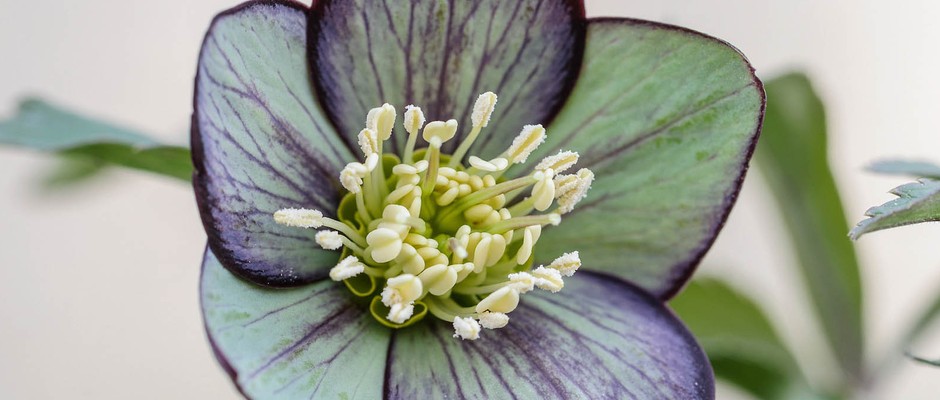
Hellebores: the best species hellebores
More understated than their hybridised cousins, species hellebores bring delicacy and grace to the spring garden. Plant expert Graham Rice recommends 10 of the best. Photographs by Jason Ingram.
When the pioneer hellebore breeders of the 1960s, Eric Smith and Jim Archibald, began the journey to the startling colours and forms that we have today, simple species hellebores played a crucial part. These plantsmen brought wild hellebore species together with each other and with existing selections and cultivars, creating the colours and colour combinations that are now so desirable.
The pale greens of Helleborus odorus subsp. cyclophyllus, the purples, slate-blues and dark veins of Helleborus torquatus, and the speckles of Helleborus orientalis subsp. guttatus all played their part. Even some of the first double-flowered forms came from plants of Helleborus torquatus collected in the wild.
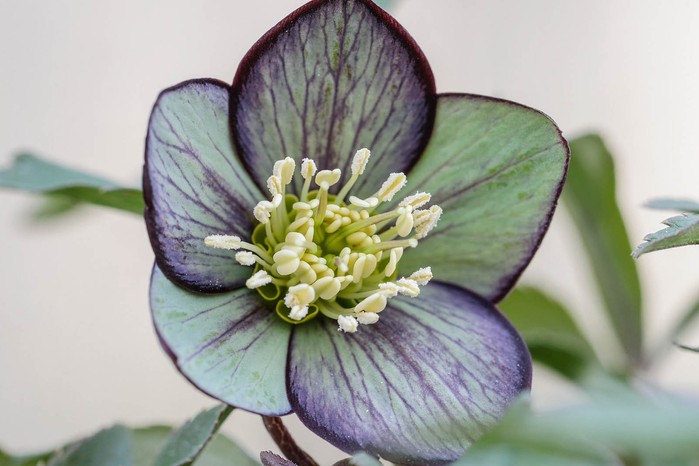
The wild species that went into creating our modern cultivars are also fascinating to grow. These hellebore flowers are not large, and are often green and sometimes have a fragrance. But while these species were used by breeders, hellebore enthusiasts also began to collect wild species for their own refinement and, sometimes, prolific flowering.
These wild hellebore species may not have the obvious impact of today’s garden hellebore hybrids, but those with a sense of history and an eye for detail will appreciate their role in the development of our favourite winter flowers and enjoy their quieter beauty.
- Where to plant species hellebores
- Caring for species hellebores
- Propagating species hellebores
- Where to buy species hellebores
Origins Europe, especially the Balkans, with outliers in China and along the Turkey-Syria border. Two species are native to the UK.
Season Winter and spring. Size 20-40cm. Those hellebores with woody stems may reach 1m.
Conditions Requirements vary. Many appreciate retentive soil in at least some shade, but will take full sun if the soil does not dry out. Others need sun and good drainage.
Hardiness Many of these hellebores are fully hardy, with a hardiness rating of RHS H7, and suitable for gardens in USDA zones 4a-8b.
How to grow species hellebores
Where to plant species hellebores
Hellebore species vary in their needs. The stemless species are usually happy in good garden soil in at least some shade; the more open the situation, the more moisture hellebores require.
Helleborus foetidus and its cultivars are best in dappled shade or in a perennial border where taller, later-flowering plants provide summer shade.
Helleborus argutifolius is unexpectedly adaptable, but the tall stems often need a plant support. The much smaller, closely related Helleborus lividus appreciates frost protection, and thrives in terracotta pots in a cold greenhouse or sheltered porch. The hybrid between the two, Helleborus x sternii, is a fine plant for winter containers, and some forms have exceptionally beautiful foliage as well as pretty flowers.
Hot, dry summers, along with protection from summer moisture and from winter frosts, are needed for the dramatic Helleborus vesicarius. A large cloche is usually sufficient for this purpose. Plants can either be grown in the border or in a large pot in an unheated greenhouse.
Caring for species hellebores
Cut off the foliage of both evergreen and deciduous hellebore species in late autumn or early winter to prevent the carry-over of disease.
Deadhead to prevent the proliferation of unwanted hybrid seedlings.
Mulch with weed-free organic matter in autumn helps maintain vigour and deter weeds.
Lift and divide stemless hellebore species in September or October and either replant at once or pot into 12cm pots and grown on for a year in a cold frame or a sheltered site outside before planting.
Provide taller-stemmed varieties with a plant support, especially in exposed locations.
Propagating species hellebores
Many of these hellebore forms can be propagated by seed, which should be sown promptly, as it ripens, in early summer. Seed needs a warm and moist period followed by cooling temperatures. Hellebore seedlings usually emerge in winter or early spring, but germination can be unpredictable. Seed-raised plants may take some years to flower.
None of the tall-stemmed hellebore types are amenable to division and seed rarely comes true unless bees are excluded during flowering time.
Where to buy species hellebores
- Ashwood Nurseries
Ashwood Lower Lane, Kingswinford, West Midlands DY6 0AE.
Tel 01384 401996, ashwoodnurseries.com
The nursery has a beautiful winter garden and runs hellebore tours in February and March, with an opportunity to purchase specially selected plants (check website for dates). - Hazles Cross Farm Nursery
Hollins Lane, Kingsley, Staffordshire ST10 2EP.
Tel 01538 752669, hazlescrossfarmnursery.co.uk
Holds the National Collection of hellebores. This comprises all known species, with many forms of each on display. Plants for sale, by telephone.
Species hellebores to grow
Helleborus argutifolius
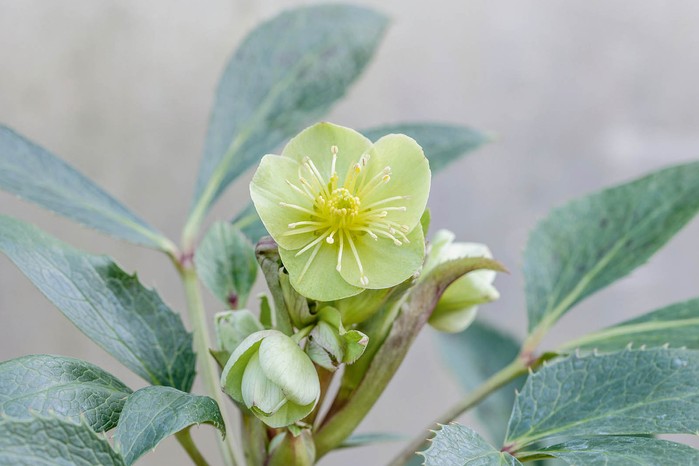
The Corsican hellebore is a bold evergreen with upright, woody stems topped with clusters of up to 30 flowers, 3-5cm in width, above large, leathery leaves split into three spiny leaflets. An adaptable hellebore but best in full sun; staking is wise. Flowers January to March. 90cm-1m. RHS H5, USDA 6a-10b.
Buy Helleborus argutifolius from Crocus
Helleborus foetidus
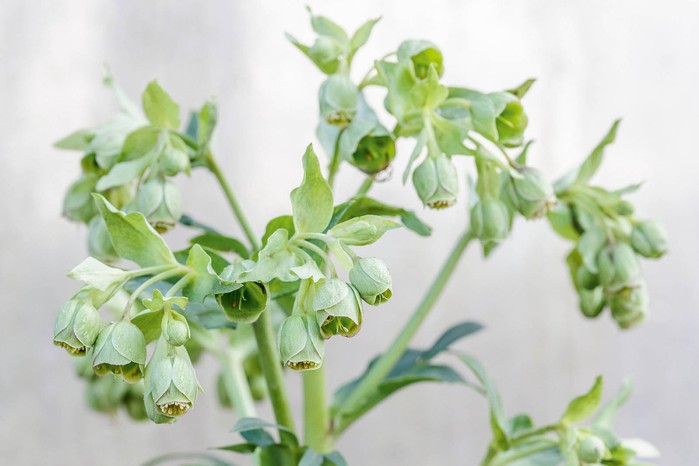
The dark, evergreen, narrow foliage of the stinking hellebore (so called as its foliage gives off an unpleasant scent when crushed) is held on upright woody stems topped with small, prolific, red-edged, tubular flowers. One of two British native hellebore species, try any cultivar, especially the red-tinted Wester Flisk Group. Flowers January to May. 90cm-1.2m. AGM. RHS H7, USDA 5a-9b.
More like this
Buy Helleborus foetidus from Crocus
Helleborus atrorubens
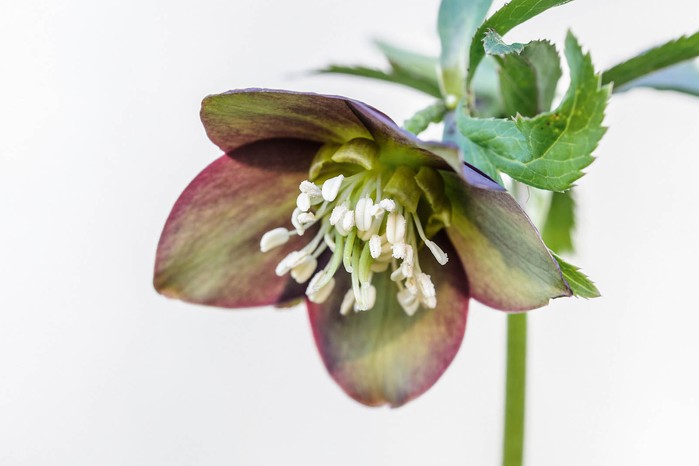
Deciduous leaves have up to 15 divisions. The small, flowers are mainly green inside with reddish-purple backs. Still confused with the Helleborus orientalis cultivar once known as ‘Atrorubens’, now called Early Purple Group. Flowers February to March. 25-35cm. RHS H5, USDA 6a-8b.
Buy Helleborus atrorubens from Ashwood Nurseries
Helleborus odorus
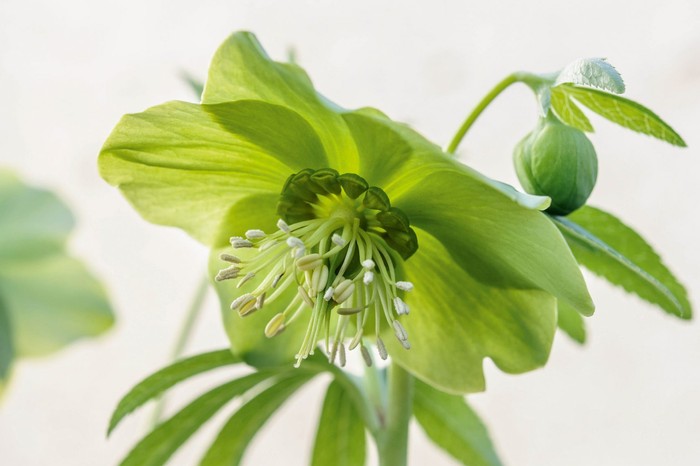
Usually evergreen, with the young foliage covered in silvery hairs, and maturing with up to 11 divisions. The apple-green flowers of this hellebore are large (4-7cm in width) and are fragrant, although opinions differ on the quality of the scent. Flowers December to March. 45-55cm. RHS H5, USDA 6a-8b.
Buy Helleborus odorus from Ashwood Nurseries
Helleborus multifidus subsp. istriacus
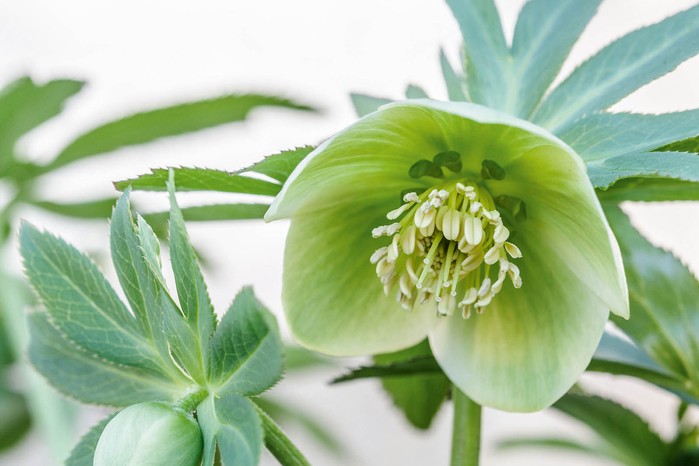
Deciduous, with rather large, 5cm, green flowers, sometimes tinted purple, often scented. Relatively undivided foliage this hellebore is split into up to 12 broad leaflets, sometimes tinted bronze as they unfurl. Flowers February to April. 20-30cm. RHS H6, USDA 6a-8b.
Buy Helleborus multifidus subsp. istriacus from Ashwood Nurseries
Helleborus torquatus

Bringing rich, dark, even bluish colour to hybrids and often puzzling botanists, the 3-4cm flowers of this hellebore vary in colour and pattern, with some pretty, dark-veined forms. The deciduous leaves may be tinted purple when young. Flowers January to March. 20-35cm. RHS H7, USDA 6a-8b.
Buy Helleborus torquatus from Rare Plants
Helleborus liguricus
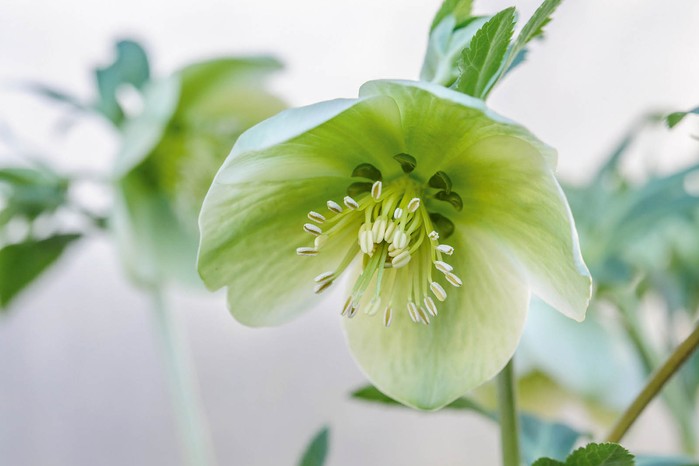
Deciduous foliage is split into about 11 broad leaflets. This form differs from the similar Helleborus bocconei in holding the whiteish-green flowers well above the foliage and in having a strong, sweet scent. Flowers November to February. 25-30cm. RHS H7, USDA 5a-8b.
Buy Helleborus liguricus from Ashwood Nurseries
Helleborus viridis subsp. occidentalis
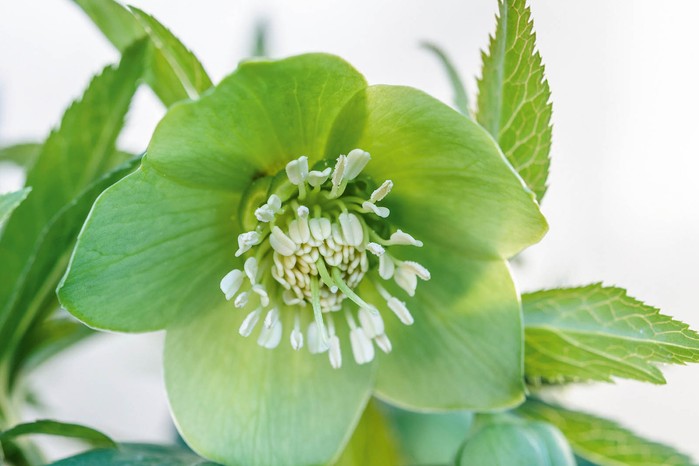
Deciduous foliage is spilt into up to 20 slim, toothed leaflets, sometimes purple-tinted when young, with dark-green flowers 2-4cm in width. One of two British native hellebore species. Flowers February to March. 20-35cm. RHS H7, USDA 6a-9b.
Buy Helleborus viridis from Ashwood Nurseries
Helleborus orientalis subsp. abchasicus
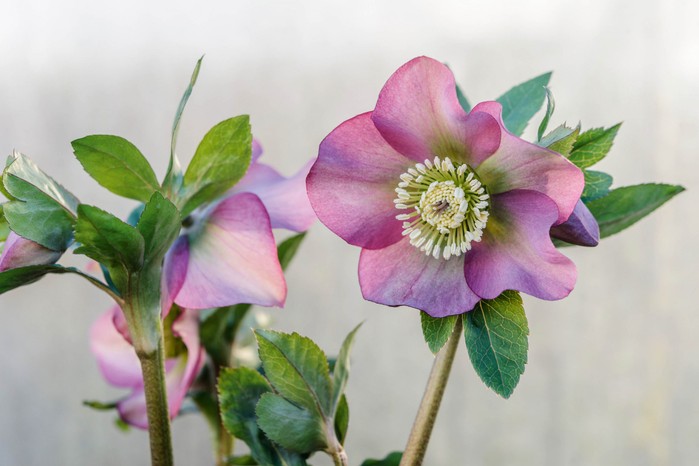
Evergreen, with bold, dark foliage split into as many as 11 divisions and with red-tinted flowers 5cm in width. This form brings purple nectaries to some cultivars. Helleborus orientalis subsp. abchasicus Early Purple Group is reliably early flowering. Flowers December to March. 40-45cm. RHS H7, USDA 3a-9b.
Buy Helleborus orientalis subsp. abchasicus from Ashwood Nurseries
Helleborus vesicarius
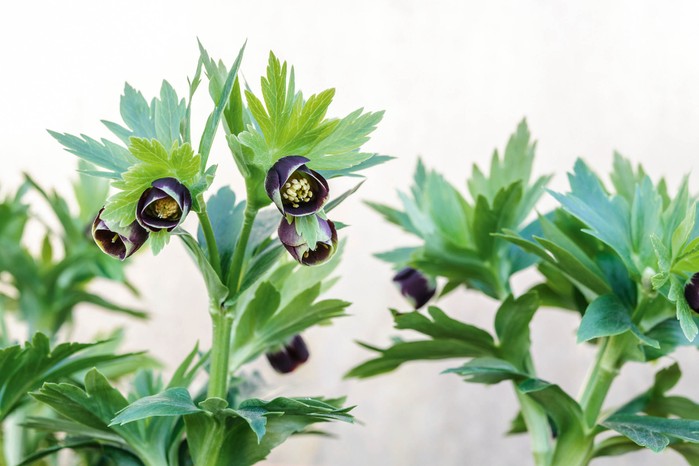
The bold, buttercup-like foliage lasts from November to June and the whole plant dies back for summer. The tubular, deep-purple-brown flowers are pale-green at the tips and mature into large, fat, inflated pods. Flowers February to April. 45-50cm. RHS H6, USDA 8a-9b.
Buy Helleborus versicarius from Rare Plants
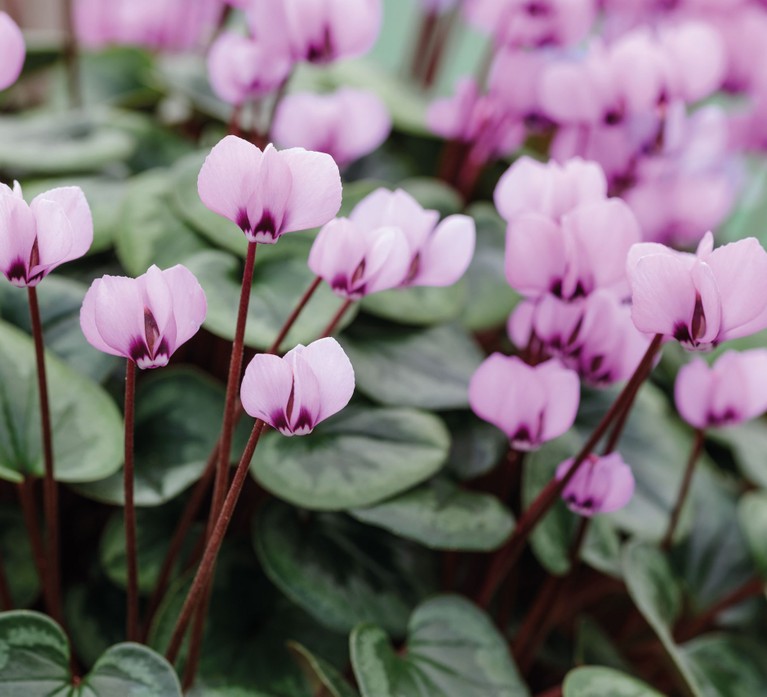
Authors
Graham Rice is a garden writer and plantsman, who is editor-in-chief of the RHS Encyclopedia of Perennials. He writes for a wide range of newspapers and magazines including The Garden and The Plant Review and is a member of the RHS Herbaceous Plant Committee and Floral Trials Committee.
Jason Ingram is an award winning garden photographer based in Bristol, UK. He travels widely shooting for magazines, book publishers and advertising agencies. He also works with top international garden designers and Landscape Architects on private projects worldwide.

Niwaki bundle worth £57 when you subscribe
Subscribe to Gardens Illustrated magazine and claim your Niwaki bundle worth £57
*UK only

Container Gardening Special Edition
The Gardens Illustrated Guide to Container Gardening.
In this special edition, discover colourful flower combinations and seasonal planting schemes for pots designed by leading plantspeople, and essential know-how for container gardening success. Just £9.99 inc UK p&pBy entering your details, you are agreeing to our terms and conditions and privacy policy. You can unsubscribe at any time.
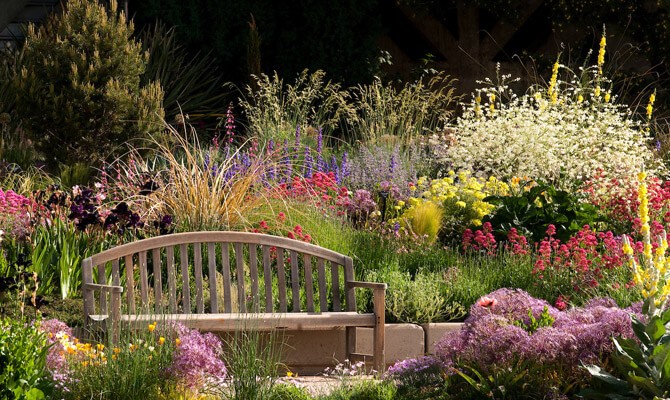
Gardens of the Globe
From botanical wonders in Australia to tranquil havens closer to home in Ireland, let this guide help you to discover some of the most glorious gardens around the world
By entering your details, you are agreeing to our terms and conditions and privacy policy. You can unsubscribe at any time.





